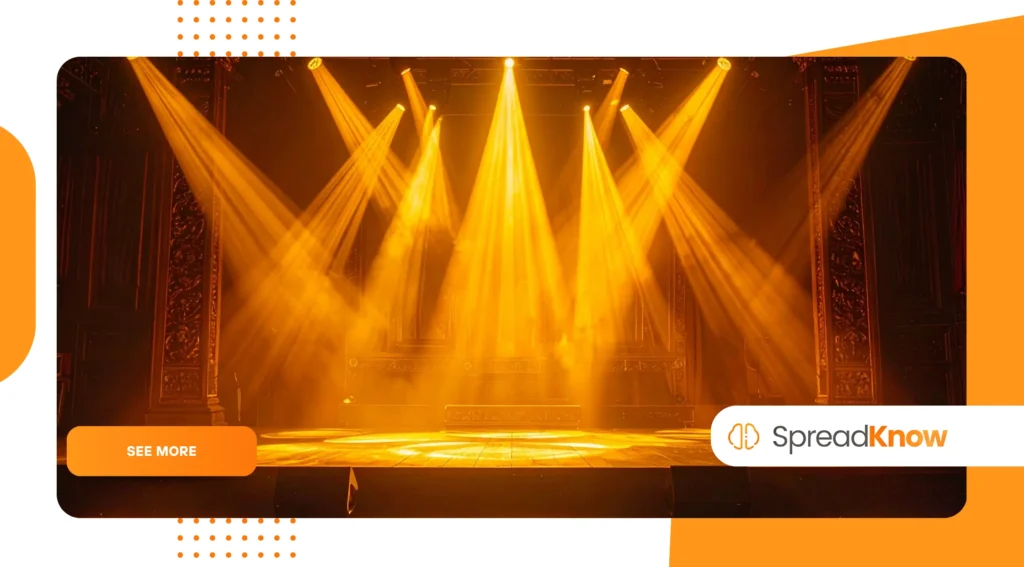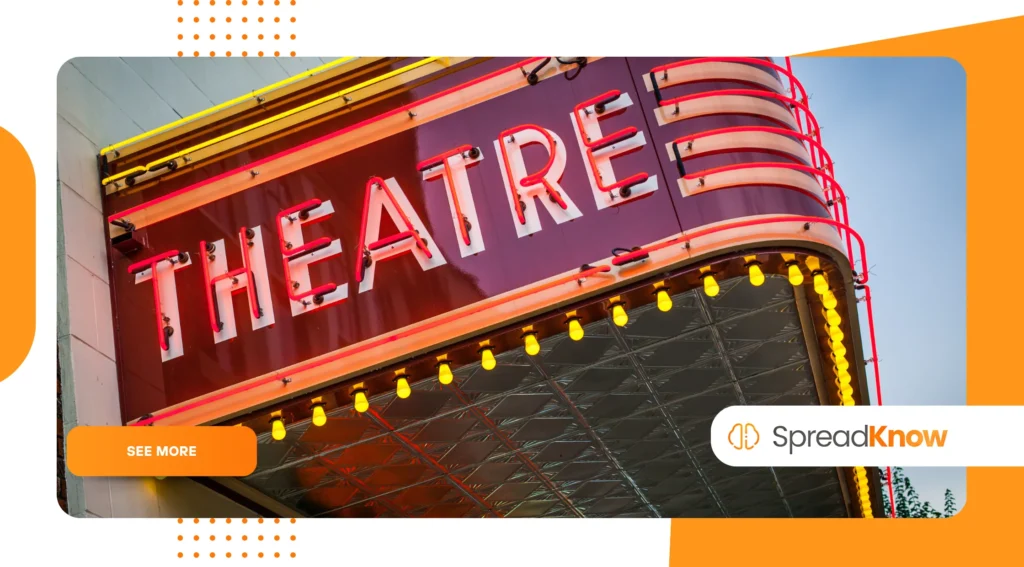L'histoire du théâtre et son influence aujourd'hui

Le histoire du théâtre est plus qu’un voyage chronologique de pièces et d’acteurs ; c’est l’histoire de l’humanité qui s’efforce de se comprendre à travers le rituel, le récit et l’expérience collective.
Annonces
De l’écho des voix dans les amphithéâtres antiques aux scènes numériques d’aujourd’hui, le théâtre est resté un miroir des émotions humaines et des transformations sociétales.
Lorsque le public entre dans une salle de spectacle, il pénètre dans un espace partagé d'imagination et de réflexion. Ce rassemblement est resté remarquablement constant au fil du temps, malgré l'évolution des formats.
La continuité du théâtre nous montre que l’art n’est pas seulement un divertissement : c’est une pratique culturelle essentielle qui s’adapte à l’esprit de chaque époque.
Résumé
Cet article explore :
Annonces
- Les origines du théâtre dans les rituels antiques et la démocratie grecque.
- L'époque romaine et sa transition vers le drame religieux médiéval.
- Les innovations de la Renaissance et l’émergence de dramaturges emblématiques.
- Le rôle politique, culturel et éducatif du théâtre à travers les siècles.
- L'influence moderne du théâtre sur le cinéma, la télévision et les médias numériques.
- Leçons les histoire du théâtre offres pour les créateurs et les publics d'aujourd'hui.
Racines anciennes : rituels et expression communautaire
Le théâtre a commencé comme un rituel. Les communautés se réunissaient pour honorer les dieux, célébrer les récoltes ou commémorer les ancêtres, transformant le mouvement et le chant en performance.
Au fil du temps, ces rituels ont acquis une structure, conduisant à la naissance de la tragédie et de la comédie dans la Grèce antique.
Le festival de Dionysos à Athènes en est l'exemple le plus frappant. Les citoyens, toutes classes sociales confondues, remplissaient les amphithéâtres pour assister à des pièces d'Eschyle, de Sophocle et d'Euripide.
La scène n'était pas seulement une plateforme pour les acteurs, c'était un forum civique. À travers des histoires comme Œdipe roi ou MédéeLes Athéniens débattaient du destin, de la justice et de la moralité d’une manière qui façonnait la pensée démocratique.
Cette fonction communautaire du théâtre peut être comparée aux mairies modernes ou encore aux débats tendance sur les réseaux sociaux.
Tout comme les plateformes d’aujourd’hui permettent à la société de négocier des valeurs, le théâtre grec offrait une scène où l’identité collective était remise en question, testée et renouvelée.
+ Comment améliorer vos compétences en gestion du temps en 7 jours
Rome : divertissement, pouvoir et spectacle
Lorsque Rome a absorbé la culture grecque, elle a remodelé le théâtre pour satisfaire son appétit de grandeur. Les scènes sont devenues plus grandes, les représentations plus bruyantes et les histoires plus accessibles au grand public.
Le Colisée et d'autres arènes intégraient des techniques de mise en scène à des merveilles d'ingénierie, telles que des trappes et des plates-formes rotatives.
Les dramaturges romains comme Plaute et Térence ont insufflé de l'humour et de la satire à leurs comédies, se moquant des normes sociales tout en divertissant les soldats, les citoyens et même les esclaves.
Cet équilibre entre divertissement et critique ressemble aux émissions de fin de soirée modernes, où l’humour masque souvent des commentaires politiques acerbes.
Le théâtre romain était pourtant également lié au pouvoir impérial. Les empereurs parrainaient des productions pour s'attirer les faveurs du public et réprimer la dissidence, révélant ainsi comment l'art peut servir à la fois la résistance et le contrôle.
Cette double nature persiste aujourd’hui, alors que les gouvernements et les entreprises continuent d’utiliser le divertissement pour façonner les récits et influencer l’opinion publique.
+ À la découverte de l'art autochtone : un voyage au cœur des traditions anciennes
Le Moyen Âge : du drame sacré à l'apparat civique

Avec le déclin de Rome, le théâtre professionnel a décliné en Europe, mais le désir de raconter des histoires n’a jamais disparu.
L’Église est intervenue en utilisant des Écritures dramatisées pour éduquer les communautés qui ne savaient pas lire.
Les pièces de mystère et les drames moraux illustraient les enseignements chrétiens à travers des personnages représentant des vertus, des vices et des figures bibliques.
Ces représentations quittèrent peu à peu les murs des églises pour envahir les marchés et les places publiques. Les corporations civiques commencèrent à produire des pièces, mêlant souvent leçons religieuses, humour et références locales.
Des villes entières participaient à des productions, transformant le théâtre en un projet identitaire partagé. Les Mystères de York, par exemple, pouvaient réunir des centaines d'artistes et durer des jours.
Cet engagement communautaire met en évidence le rôle du théâtre, qui va au-delà d’un simple art : il s’agit d’une infrastructure de cohésion sociale.
Tout comme les festivals locaux ou les événements sportifs d’aujourd’hui, le théâtre médiéval créait des liens entre les classes, renforçant à la fois l’esprit communautaire et les valeurs culturelles.
+ Art et architecture mexicains : de l'ancien au contemporain
Innovations de la Renaissance : l'humanisme sur scène
La Renaissance a insufflé une nouvelle vie au théâtre en réintroduisant des idées classiques et en mettant l’accent sur le potentiel humain.
Les scènes italiennes ont été les premières à utiliser des décors en perspective et des arcs de scène, créant ainsi l'illusion de profondeur dont le public profite encore dans les théâtres et les cinémas modernes.
En Angleterre, William Shakespeare a élevé l’art avec des pièces qui combinaient l’éclat poétique avec des thèmes universels.
Hamlet plongé dans le doute existentiel, tandis que Roméo et Juliette a exploré le conflit entre l’amour et le devoir social.
Ces pièces étaient jouées aussi bien pour la noblesse que pour le peuple, prouvant que le théâtre pouvait transcender les divisions de classe.
De même, en Espagne, Lope de Vega a écrit plus de 1 500 pièces de théâtre, créant des œuvres qui résonnaient avec l’identité nationale, tandis qu’en France, Molière utilisait la satire pour dénoncer l’hypocrisie en religion et en politique.
Ces dramaturges ont démontré comment le histoire du théâtre pourrait combiner divertissement et recherche intellectuelle, ouvrant la voie à des siècles d’influence.
Des Lumières au théâtre moderne : miroirs sociaux
Aux XVIIIe et XIXe siècles, le théâtre était devenu un champ de bataille intellectuel. Des dramaturges tels qu'Henrik Ibsen La Norvège et Anton Tchekhov En Russie, ils ont rejeté le mélodrame exagéré et ont adopté le réalisme.
Leurs œuvres placent les gens ordinaires et les luttes quotidiennes au centre de la scène, forçant le public à affronter des vérités inconfortables sur la société.
Par exemple, celui d'Ibsen Une maison de poupée a remis en question les rôles traditionnels des sexes, scandalisant le public mais suscitant des débats cruciaux sur les droits des femmes.
Le théâtre était devenu un miroir social, reflétant les injustices et inspirant le changement. De même, le théâtre de Tchekhov Le verger de cerisiers Il dépeint une Russie au bord de la transformation, utilisant un dialogue subtil pour saisir les profondes tensions sociétales.
Les innovations technologiques ont également élargi les possibilités. L'éclairage au gaz a apporté ambiance et atmosphère, tandis que l'électricité a apporté précision et sécurité.
Ces changements reflètent la manière dont Netflix ou la réalité virtuelle transforment la narration aujourd’hui – preuve que le théâtre s’est toujours adapté aux nouveaux outils sans perdre son essence.
L'influence du théâtre sur le divertissement contemporain
La scène n’est peut-être plus le principal moyen de divertissement de masse, mais ses empreintes sont partout.
La structure en trois actes des pièces de théâtre est utilisée dans les films hollywoodiens, tandis que les comédies musicales de Broadway inspirent les productions télévisées et les adaptations cinématographiques.
Même les jeux vidéo empruntent des éléments théâtraux, tels que des arcs de personnages et des dialogues mis en scène, pour immerger les joueurs.
La résilience de Broadway illustre cette influence continue. Selon Statista, ses revenus ont dépassé 1,4 milliard de livres sterling en 2023, démontrant que le spectacle vivant prospère malgré la concurrence des plateformes de streaming.
L’immédiateté émotionnelle d’une performance en direct – le sentiment d’être « dans l’instant présent » – reste quelque chose que les écrans ne peuvent pas reproduire.
Le théâtre s'étend également au-delà de l'art à la thérapie et à l'éducation. Des jeux de rôle dérivés des techniques scéniques sont utilisés en classe, pour la formation au leadership et même pour la résolution de conflits.
Le histoire du théâtre démontre non seulement une endurance culturelle mais aussi des applications pratiques dans divers contextes modernes.
Étude de cas : Hamilton et le pouvoir moderne du théâtre
Lin-Manuel Miranda Hamilton illustre l'adaptabilité et l'influence du théâtre. En alliant hip-hop et histoire américaine, il a attiré un public qui n'aurait peut-être jamais envisagé d'assister à un spectacle de Broadway.
La production a suscité un regain d’intérêt pour les pères fondateurs et a déclenché des conversations sur la race, l’immigration et l’identité.
Les universités à travers les États-Unis utilisent désormais Hamilton dans les cours d'histoire et de sciences politiques, mettant en avant le rôle du théâtre comme outil pédagogique.
Tout comme les tragédies grecques ont autrefois suscité un débat civique, Hamilton nous rappelle que le théâtre peut inspirer le dialogue sur la démocratie, l’égalité et la justice.
La popularité mondiale de la pièce démontre également à quel point histoire du théâtre se réinvente continuellement pour engager les nouvelles générations.
En fusionnant tradition et innovation, le théâtre prouve sa pertinence dans la formation du discours public et de l’identité culturelle.
Tableau : Les époques clés de l'histoire du théâtre et leur influence
| Ère | Caractéristiques | Influence durable aujourd'hui |
|---|---|---|
| Grèce antique | Origines rituelles, démocratie, tragédie | Catharsis, dialogue, débat moral |
| Empire romain | Spectacle, comédie, satire politique | Divertissement de masse, mécanique scénique |
| Moyen-âge | Pièces religieuses, faste civique | Théâtre communautaire, théâtre éducatif |
| Renaissance | Humanisme, Shakespeare, innovation | Thèmes universels, scènes à l'italienne |
| XVIIIe-XIXe siècle | Réalisme, critique sociale, technologie | Drame moderne, identité nationale |
| Contemporain | Multimédia, art politique, diversité | Cinéma, streaming, théâtre appliqué |
Conclusion
Le histoire du théâtre Ce n’est pas simplement un recueil de pièces de théâtre, mais un témoignage vivant de la créativité, de la résilience et du désir de connexion de l’humanité.
Des chants sacrés des rituels anciens aux lumières éblouissantes de Broadway, le théâtre s’est toujours adapté à de nouveaux contextes sans perdre son essence.
Son influence sur les médias modernes, l’éducation et la politique prouve que la scène n’est pas un artefact mais un espace dynamique où les idées prennent vie.
Que ce soit à travers Shakespeare, Hamilton, ou même une production scolaire locale, le théâtre continue de façonner notre façon de penser, de ressentir et d’interagir avec le monde.
Questions fréquemment posées
1. Pourquoi l’histoire du théâtre est-elle importante aujourd’hui ?
Parce qu’il révèle comment la narration a façonné la culture, la politique et l’identité à travers les siècles, tout en influençant encore les médias et l’éducation modernes.
2. Comment le théâtre grec a-t-il influencé le théâtre moderne ?
Il a introduit le dialogue, les intrigues structurées et l’exploration des dilemmes moraux, qui restent tous au cœur des pièces de théâtre, des films et même des séries en streaming.
3. Quel rôle la religion a-t-elle joué dans le développement du théâtre ?
Les rituels religieux ont donné naissance à la performance, et les pièces de théâtre des églises médiévales ont éduqué les communautés avant d’évoluer vers le divertissement civique.
4. Quel impact la technologie a-t-elle eu sur le théâtre ?
De l'éclairage au gaz au mapping vidéo, la technologie a constamment remodelé la scénographie, enrichissant l'expérience sensorielle du public.
5. Le théâtre est-il toujours pertinent à l’ère du numérique ?
Oui. Il prospère en tant que spectacle vivant, inspire le cinéma et la télévision, et demeure un moyen unique de dialogue, d'éducation et de critique sociale.
